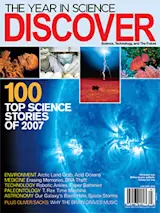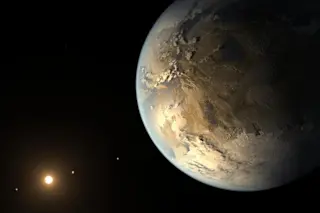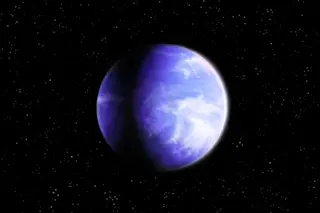Its name doesn’t exactly roll off the tongue, but HD 189733b is the planet of the year. A gas giant orbiting a yellow dwarf star roughly 63 light-years away, HD 189733b is the first exoplanet—short for extrasolar planet—for which astronomers have been able to produce a weather map. That map was created in May by a team led by Heather Knutson at Harvard University.
Culled from infrared spectrographic data captured by NASA’s Spitzer Space Telescope, the weather map shows that the atmosphere of HD 189733b is riven with supersonic winds and has highs of around 1,700 degrees Fahrenheit. The planet appears to be too hot and violent to support anything like life as we know it, but now that astronomers know how to study the atmosphere of one exoplanet, they are ready to try extending the technique to other, potentially more inviting worlds. “This is not something we thought we’d ...














